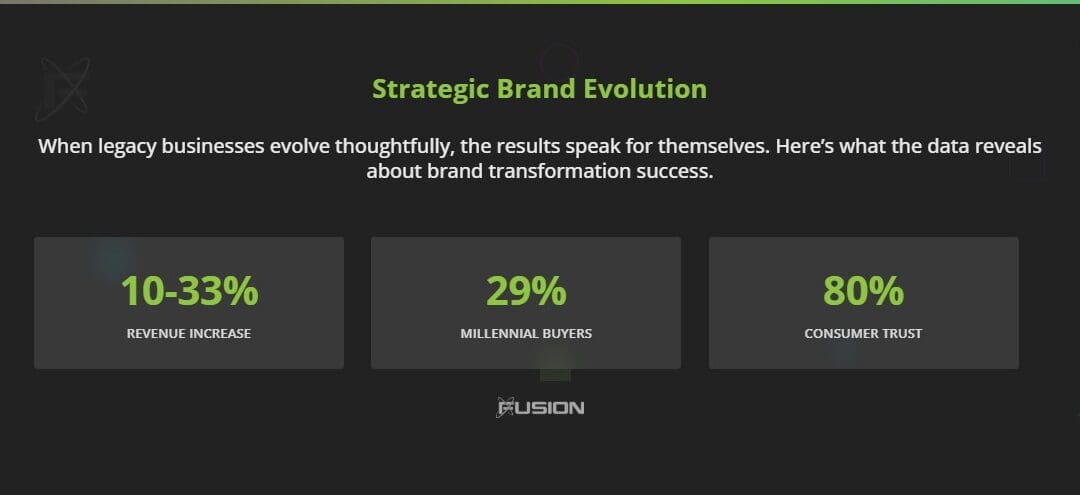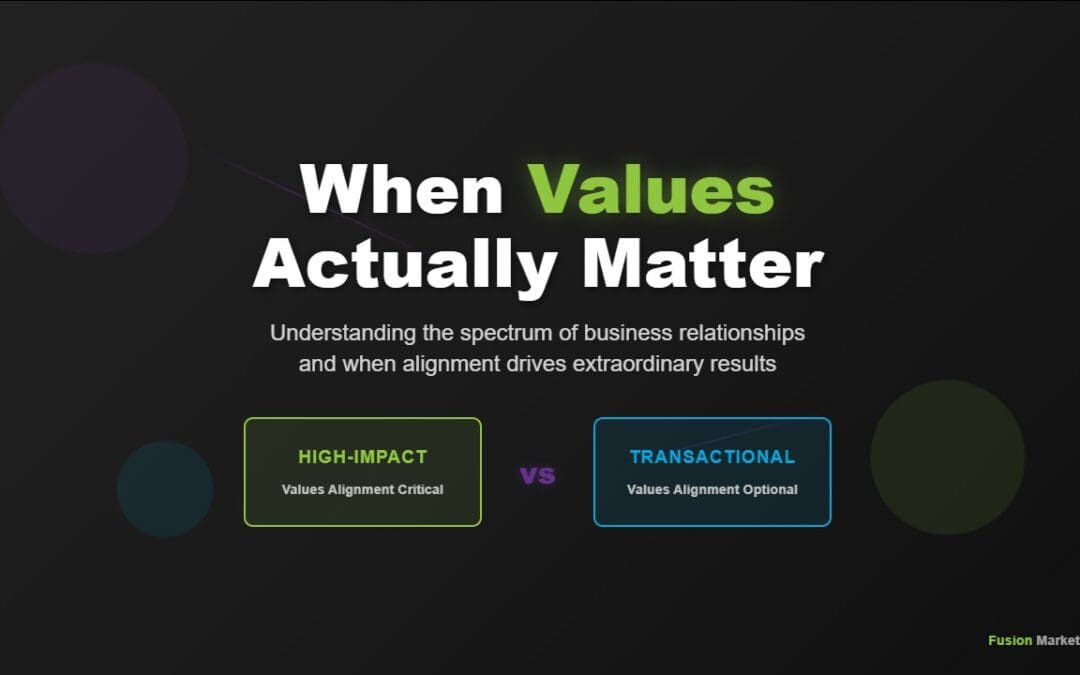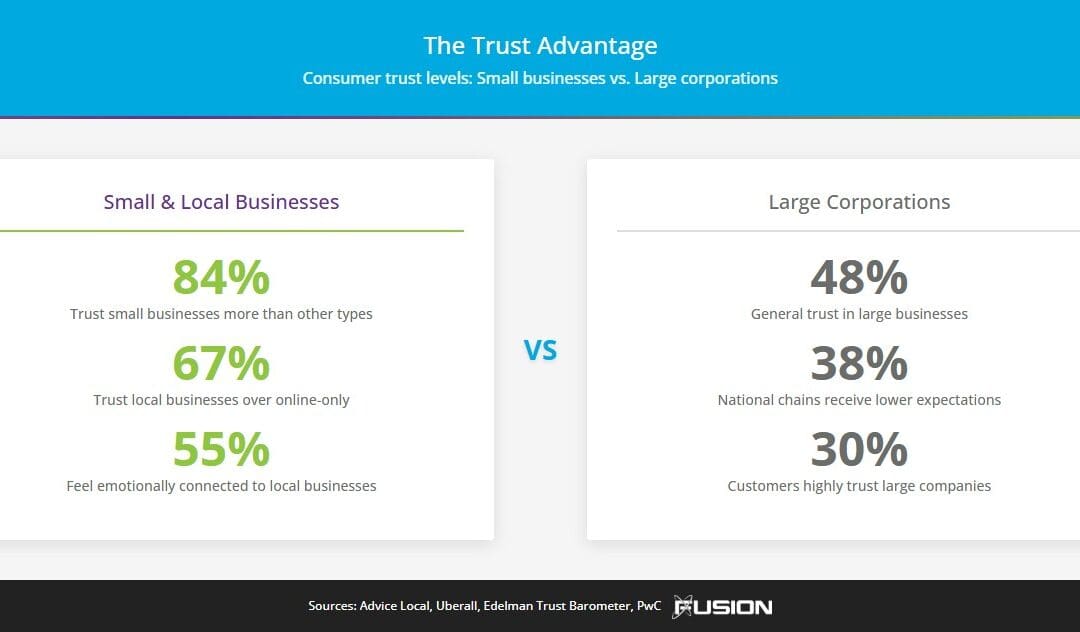The creative industry is finally waking up to what forward-thinking leaders have known for years: neurodivergent talent isn’t just valuable, it’s essential. Forbes recently highlighted how companies like Havas are repositioning neurodivergent minds as critical to surviving what’s next in creativity, with their Beyond the Brief campaign declaring that “advertising needs them to survive.”
But what if we’re still thinking too small?
While industries scramble to recognize neurodivergent talent as a creative advantage, some business leaders have discovered something even more profound: neurodivergent thinking patterns don’t just enhance creativity, they fundamentally reshape how businesses can operate, creating sustainable models that simultaneously drive profit, purpose, and employee engagement.
The Neurodivergent Business Advantage: More Than Creativity
John Hofmann, founder of Fusion Marketing, recognized the potential of neurodivergent employees years before it became a mainstream conversation.
“I noticed that neurodivergent creatives tend to have an eye for something that is commonly overlooked by neurotypical individuals,” he explains. “In fact, my core team at Fusion has been neurodiverse since 2019, or at least that’s when I started to consciously acknowledge it.”
This wasn’t a hiring strategy or diversity initiative, it was pattern recognition in action. Research shows that 69% of neurodivergent professionals believe their thinking style gives them a creative advantage, yet only 19% feel supported at work. Hofmann observed that his team members’ tendency to hyperfixate on subjects within their special interests, whether art techniques or client missions, created an unexpected competitive advantage.
“It’s not just about the billable hours,” he notes. “It’s about the creative process and the social impact our work is going to help shape.”
How Neurodivergent Thinking Patterns Transform Operations
Traditional business accommodations focus on helping neurodivergent employees adapt to existing systems. But what happens when you flip that approach and adapt your business model to leverage neurodivergent strengths?
The transformation required rethinking traditional business systems. Take team member Shay, who excels at client communication but struggles with phone calls.
“Years ago I tried to fight that because it’s ‘just a phone call,'” Hofmann admits. “But as I’ve grown as a leader, I’ve learned that it’s more fruitful to concentrate on everybody’s superpowers as opposed to trying to force them inside of a box that isn’t really relevant.”
Rather than seeing this as accommodation, Hofmann redesigned communication systems that actually work better for everyone.
“She’ll reach out to somebody else on the team, myself included, and have us reach out to them for her. I think that everybody has areas of their work that they really excel at and things that they have natural tendency to shy away from. Acknowledging that and embracing it has really helped our culture.”
This approach aligns with research from Harvard Business Review showing that companies with neurodivergent talent report 30% higher rates of innovation when systems are adapted to support different thinking patterns.
Business Model Transformation
Building Sustainable Business Models Around Neurodivergent Strengths
The real breakthrough came during Fusion’s 10-year company reflection exercise. While most agencies might have focused on revenue targets or service expansion, Hofmann’s neurodivergent team gravitated toward a different question: How could their work create more meaningful impact?
The answer became the Pairadox Project—a business model innovation that showcases neurodivergent thinking in action. Here’s how it works: for every paying client project Fusion completes, they provide the exact same service to a nonprofit organization. Not a scaled-down version or pro bono afterthought, the same quality logo design, website development, or branding work their paying clients receive.
“The Pairadox Project isn’t charity,” Hofmann explains on the program’s website. “It’s a fundamental reimagining of how business and community can work together.”
The model emerged directly from his team’s hyperfixation on meaningful work and their inability to separate profit from purpose.
Recent data shows that 93% of nonprofits report strong brand identity positively impacts donor engagement, yet many lack resources for professional design. The Pairadox Project addresses this gap while creating what Hofmann calls “community infrastructure.”
The Competitive Edge of Purpose-Driven Neurodivergent Teams
What Hofmann discovered contradicts conventional business wisdom: when neurodivergent team members know their daily work automatically generates community impact, their natural hyperfixation intensifies in productive ways. They’re not just completing client projects, they’re advancing causes they care about with every logo, website, and campaign they create.
“This means that my team has a tendency to go above and beyond for our clients,” Hofmann observes.
The passion-driven approach creates measurable competitive advantages: higher client satisfaction, stronger retention rates, and work quality that consistently exceeds expectations because team members are emotionally invested in outcomes.
The model also solves the traditional nonprofit challenge of resource constraints while addressing the business challenge of meaningful employee engagement. When potential clients learn that hiring Fusion automatically generates nonprofit impact in their chosen cause category, it creates authentic brand alignment that traditional agencies can’t match.
Systems That Scale Neurodivergent Advantages
The success extends beyond individual accommodations to systemic innovation. By building meaning directly into operational DNA rather than treating social impact as an add-on, Fusion has created sustainable competitive advantages.
This approach particularly resonates with socially conscious clients. “We work with a lot of socially conscious organizations,” Hofmann notes. The model’s elegance lies in its sustainability, unlike traditional corporate social responsibility programs that compete with profit margins, the Pairadox Project leverages existing workflows and team strengths.
Every project doubles impact without doubling costs, because the same creative processes that serve paying clients serve nonprofit partners. This operational efficiency stems directly from aligning business models with neurodivergent thinking patterns rather than constraining them.
The Future of Neurodivergent Business Innovation
Hofmann envisions scaling this approach across industries. “Imagine if every company in your city took just 10% of their marketing budget and invested it directly in community organizations,” he suggests. “The math isn’t crazy and it would change everything.”
The potential extends beyond marketing agencies. Any business that works with neurodivergent talent could examine how hyperfixation patterns and special interests might innovate their core operations. The key insight isn’t about accommodation, it’s about alignment.
When business models leverage rather than constrain neurodivergent thinking patterns, they unlock competitive advantages unavailable to traditional approaches. Companies like Microsoft, SAP, and Henry Ford are beginning to recognize these advantages, implementing neurodiversity hiring programs that go beyond accommodation to leverage different cognitive approaches.
Implementing Purpose-Driven Models in Your Organization
For business leaders considering similar approaches, the transformation starts with understanding that neurodivergent employees bring more than creative skills, they bring different operational perspectives that can revolutionize entire business models.
Key strategies include:
- Aligning company missions with employee hyperfixations and special interests
- Redesigning communication systems around team strengths rather than forcing conformity
- Building purpose directly into operational workflows rather than treating it as an add-on
- Measuring success through both profit and impact metrics that resonate with neurodivergent team members
As the Forbes article noted, creative industries are beginning to recognize that neurodivergent minds “don’t need advertising. Advertising needs them.” But the broader business community has yet to grasp the fuller implications: neurodivergent thinking patterns don’t just enhance existing processes, they can revolutionize entire business models for a future where purpose and profit aren’t competing forces, but complementary engines of growth.
Taking Action: The Time Is Now
The question for business leaders isn’t whether to accept neurodivergent talent, but whether they’re ready to reimagine their operations around the innovative thinking patterns these team members naturally bring.
As Hofmann puts it: “I’m tired of waiting for some mythical ‘right time’ to start making a difference. That time is now. That place is here.”
Companies ready to explore neurodiversity hiring initiatives or purpose-driven business model innovation can start by examining how their current operations might better align with neurodivergent thinking patterns.
Want to learn more about implementing purpose-driven business models? The Pairadox Project application takes less than 10 minutes for qualifying nonprofits, and businesses interested in similar approaches can explore how social impact integration might enhance their own team engagement and competitive positioning.
—
Ready to optimize your business for neurodivergent talent? Contact our team to discuss how purpose-driven business models can create competitive advantages in your industry.





